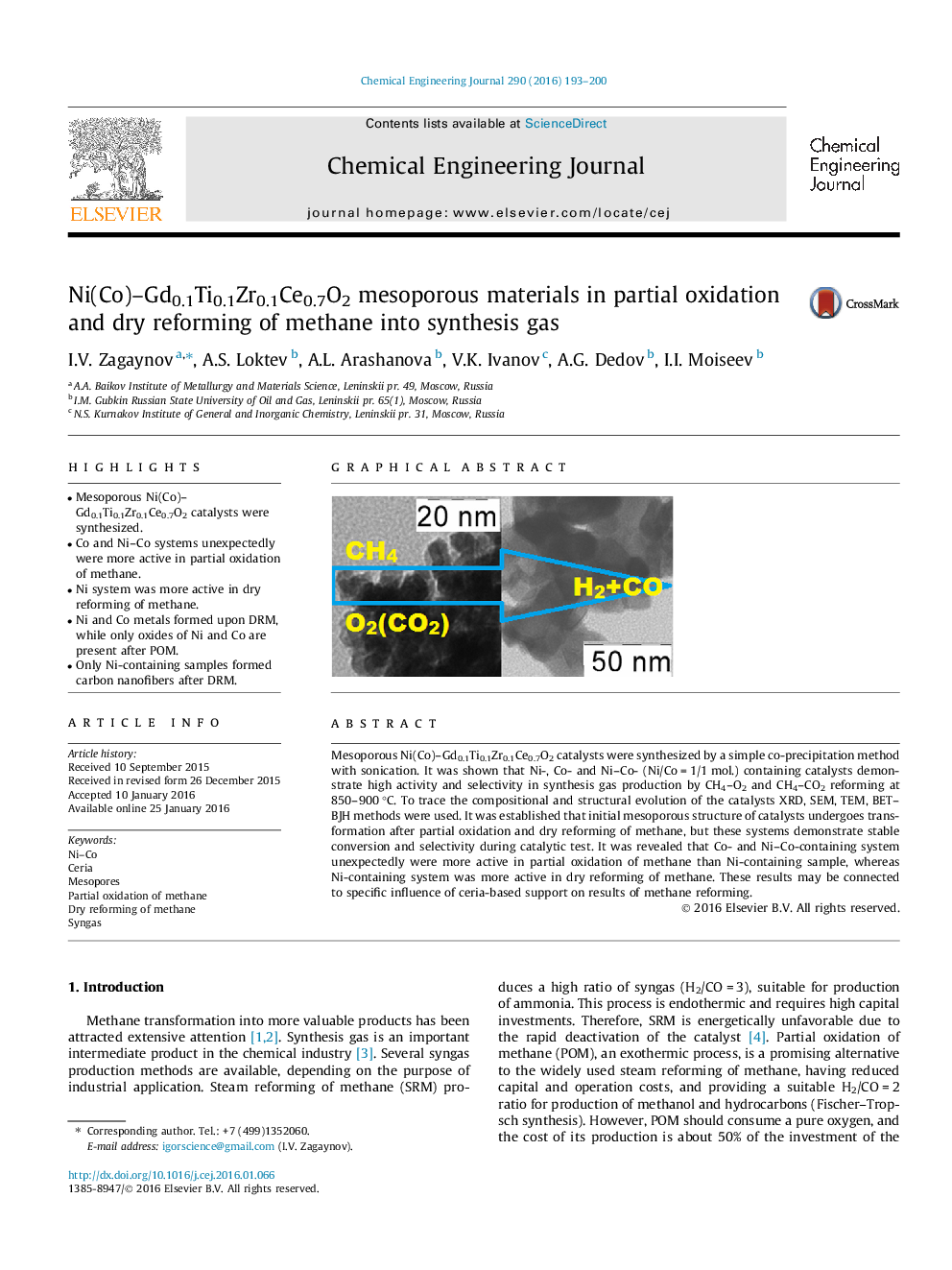| Article ID | Journal | Published Year | Pages | File Type |
|---|---|---|---|---|
| 145783 | Chemical Engineering Journal | 2016 | 8 Pages |
•Mesoporous Ni(Co)–Gd0.1Ti0.1Zr0.1Ce0.7O2 catalysts were synthesized.•Co and Ni–Co systems unexpectedly were more active in partial oxidation of methane.•Ni system was more active in dry reforming of methane.•Ni and Co metals formed upon DRM, while only oxides of Ni and Co are present after POM.•Only Ni-containing samples formed carbon nanofibers after DRM.
Mesoporous Ni(Co)–Gd0.1Ti0.1Zr0.1Ce0.7O2 catalysts were synthesized by a simple co-precipitation method with sonication. It was shown that Ni-, Co- and Ni–Co- (Ni/Co = 1/1 mol.) containing catalysts demonstrate high activity and selectivity in synthesis gas production by CH4–O2 and CH4–CO2 reforming at 850–900 °C. To trace the compositional and structural evolution of the catalysts XRD, SEM, TEM, BET–BJH methods were used. It was established that initial mesoporous structure of catalysts undergoes transformation after partial oxidation and dry reforming of methane, but these systems demonstrate stable conversion and selectivity during catalytic test. It was revealed that Co- and Ni–Co-containing system unexpectedly were more active in partial oxidation of methane than Ni-containing sample, whereas Ni-containing system was more active in dry reforming of methane. These results may be connected to specific influence of ceria-based support on results of methane reforming.
Graphical abstractFigure optionsDownload full-size imageDownload as PowerPoint slide
